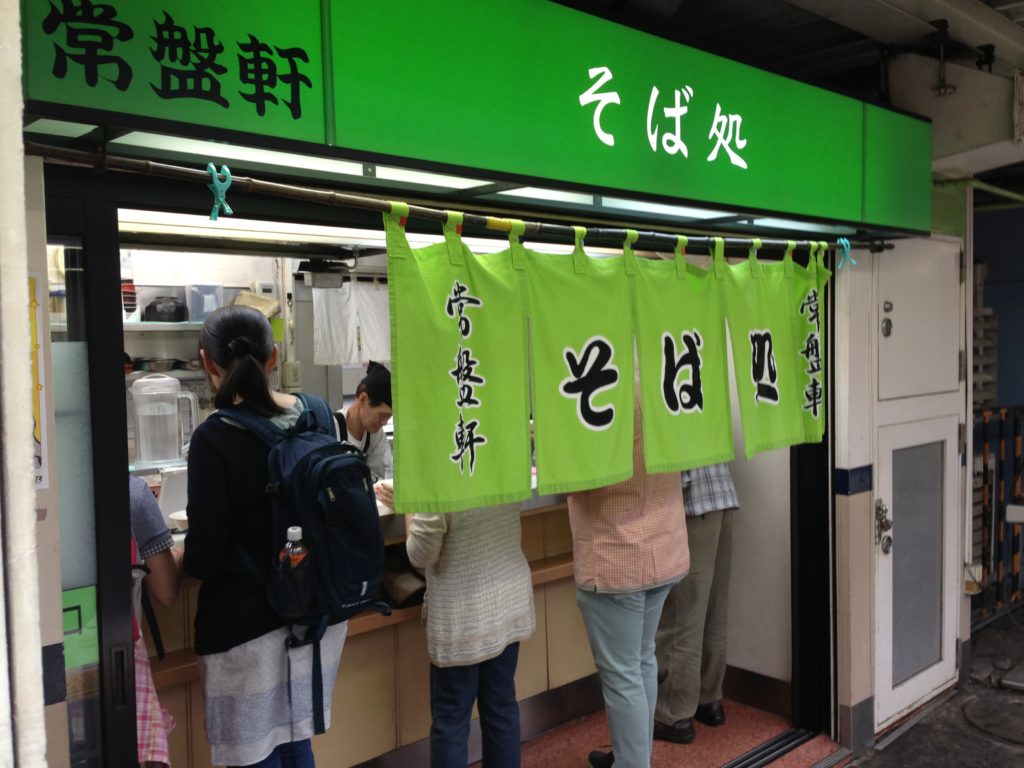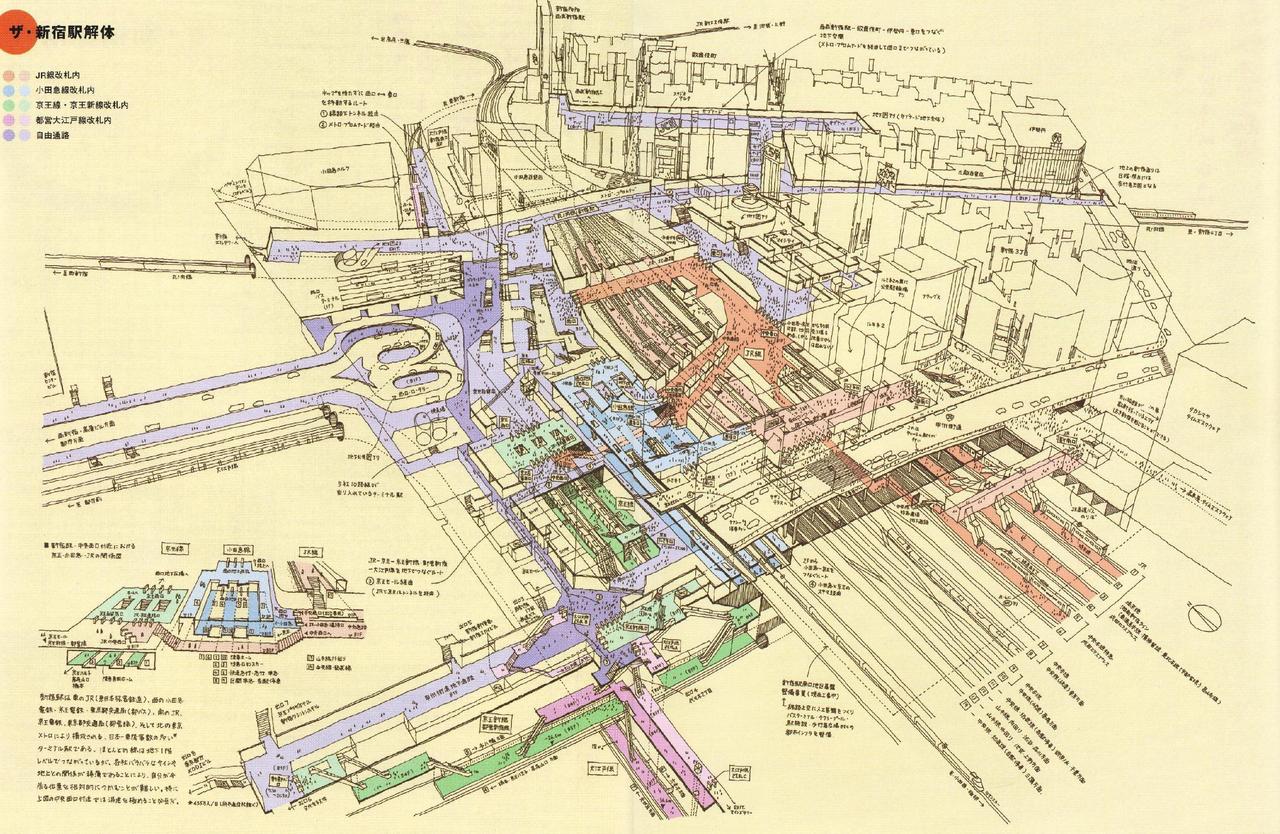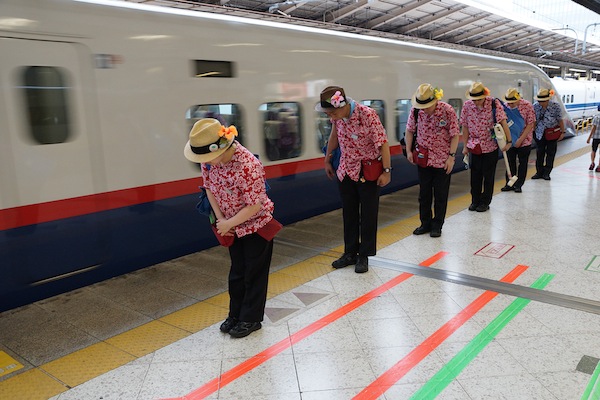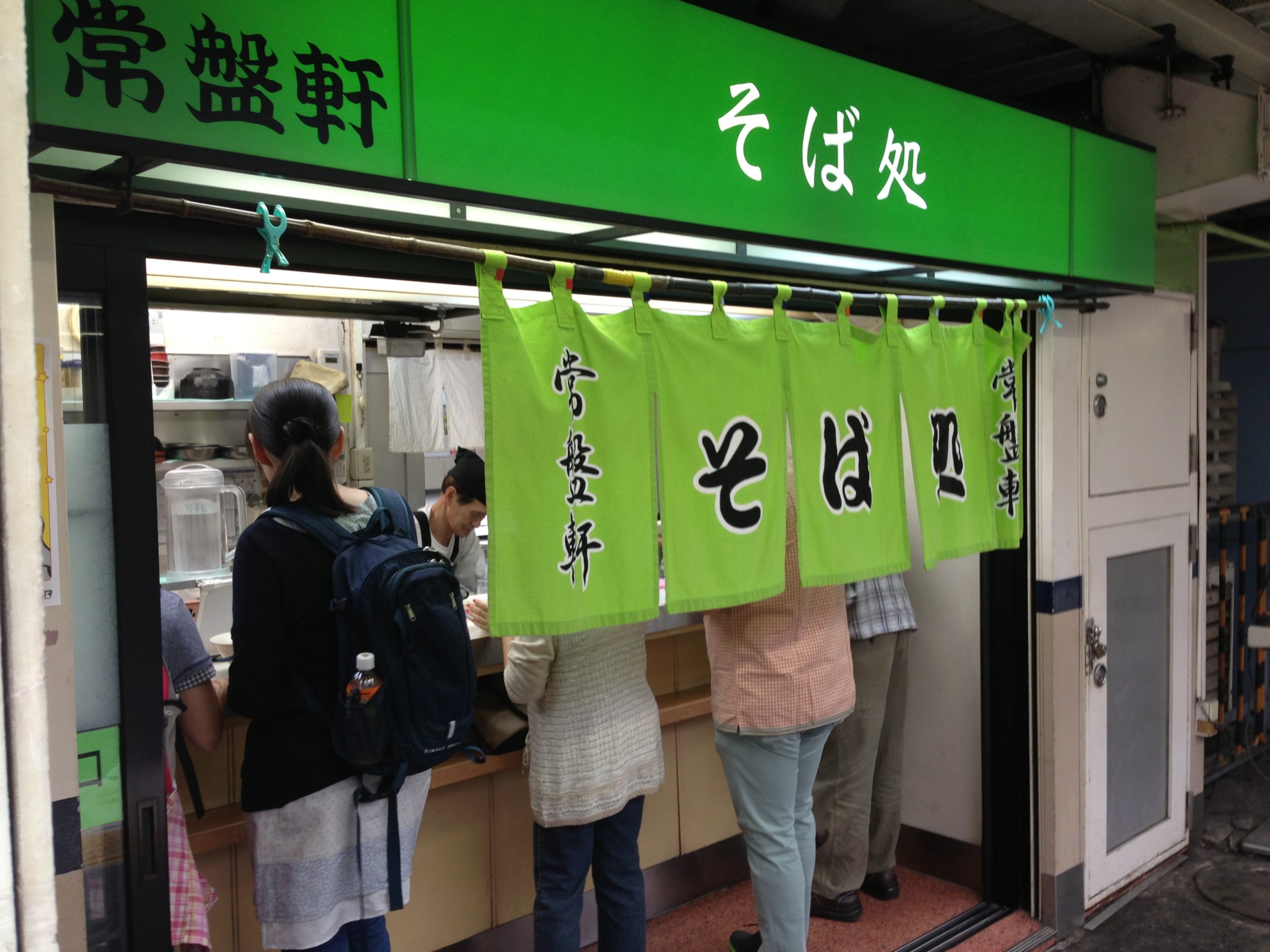Shinjuku Station

Shinjuku Station is the world’s busiest railway station, handling over three million people every day and a dozen railway and subway lines. Busta Shinjuku bus terminal is located on top of the railway station. The underground station hosts services from five different train companies while also providing access to many stores, restaurants, and hotels.
The station is understood as an instantiation of the ‘urban commons‘ in that it is the ultimate space of thresholds; it supports and encourages dynamic, dense, and diverse social interactions. In this context, commoning practices are understood as a dense mix of activities and uses (shopping, offices, restaurants, trains and buses). Regulations of the commons are transmitted and applied the social norms (explicit and tacit) that allow such diverse everyday activities to take place in a single space, throughout the day. Institutions of the commons range from small businesses to large corporations (train companies), and the city of Tokyo.
Every user and worker of the Shinjuku Station contributes to the vast fabric of Tokyo’s urban commons. For instance, the commuting businessman who buys his lunch from a bento box store while connecting from one train line to the other. Or the ramen shop cook and saleswoman, who starts work at 4 am when the station opens, works through the morning and evening commuter rush, and only leaves after the last customers late in the evening. Or final, the station helper, who provides information and directions to all those trying to navigate through the Shinjuku maze. In their own way, these various users are the appropriators of the urban commons, all contributing to the dynamic daily life that takes place within its underground spaces.
BOSTON COLLEGE; CENTER FOR WORK & FAMILY : Work-Life in Japan: The Past is Prologue
How the punctuality of the Shinkansen has been achieved
https://www.researchgate.net/publication/271420182_How_the_punctuality_of_the_Shinkansen_has_been_achieved
Shinjuku Station Tokyo – Tokyos mega Bahnhof
https://www.welt.de/mediathek/serie/technik-und-wissen/sendung184231848/Shinjuku-Station-Tokio-Tokios-Mega-Bahnhof.html
An application of the node-place model to explore the spatial development dynamics of station areas in Tokyo
http://jtlu.org/index.php/jtlu/article/view/145
Image 1 –
Section trough shinjukus tunel system

Image 2 –
Shinkansen Cleaning Staff “Tessei”

Image 3 –
Great Soba at the platform
